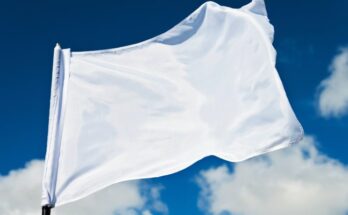BABIP vs. zBABIP at the Halfway Point
As odd as it still seems, we’re essentially at the halfway point of the 2020 season for most teams. Weird BABIP numbers don’t magically just work themselves out in a normal 162-game schedule, so we would expect them to do so even less when the season is only 60 games. In a situation like this, estimates of what BABIP a player “should” have based on their advanced data will have more relevance to future seasons than the actual BABIPs do.
Since we’re a month into our two-month season, for illustrative purposes, let’s go back and look at last year’s BABIP over- and underachievers through the end of April and compare their numbers to their May-September results. For simplicity, I’ve highlighted the players for whom BABIP was closer to the actual rest-of-season BABIP than zBABIP was. Historically, zBABIP after a month of play has been closer to the actual rest-of-season BABIP roughly 80% of the time. The player pool here included hitters with at least 50 plate appearances in April and another 200 over the rest of the season:
| Name | Apr BABIP | Apr zBABIP | Difference | May-Sep BABIP |
|---|---|---|---|---|
| Tyler White | .444 | .293 | .151 | .259 |
| Tyler Flowers | .469 | .328 | .141 | .288 |
| David Dahl | .462 | .342 | .120 | .366 |
| Tim Anderson | .435 | .325 | .110 | .391 |
| Trey Mancini | .413 | .309 | .104 | .307 |
| Mitch Garver | .393 | .289 | .104 | .257 |
| Christian Walker | .393 | .297 | .096 | .295 |
| Jeff McNeil | .409 | .318 | .091 | .317 |
| Willson Contreras | .356 | .266 | .090 | .304 |
| Robinson Chirinos | .341 | .252 | .089 | .297 |
| John Hicks | .400 | .311 | .089 | .245 |
| Fernando Tatis Jr. | .381 | .294 | .087 | .423 |
| James McCann | .439 | .353 | .086 | .346 |
| Anthony Rendon | .377 | .291 | .086 | .315 |
| Jose Martinez | .435 | .350 | .085 | .291 |
| Dexter Fowler | .407 | .324 | .083 | .269 |
| Matt Adams | .367 | .286 | .081 | .267 |
| Jorge Alfaro | .415 | .335 | .080 | .355 |
| Austin Meadows | .400 | .321 | .079 | .320 |
| Danny Santana | .429 | .351 | .078 | .341 |
Fernando Tatis Jr. is a good example of how zBABIP is not identical to the ZiPS projections for BABIP. The actual numbers do retain significant predictive value above and beyond what zBABIP provides, which is why going into the 2020 season, ZiPS projected that Tatis would have a .359 BABIP.
Overall, the top 50 overachievers combined for a .382 BABIP in April 2019 compared to a .308 zBABIP as a group. Their actual rest-of-season BABIP was .304. There are still a lot of terrific hitters on this list, but most of them were in a bit over their heads in the early going in 2019. Jeff McNeil is quite awesome, but not .370-hitter awesome:
| Name | Apr BABIP | Apr zBABIP | Difference | May-Sep BABIP |
|---|---|---|---|---|
| Jesse Winker | .200 | .344 | -.144 | .315 |
| Jesus Aguilar | .175 | .301 | -.126 | .304 |
| Jurickson Profar | .174 | .299 | -.125 | .231 |
| Jose Ramirez | .195 | .315 | -.120 | .273 |
| Franmil Reyes | .196 | .310 | -.114 | .298 |
| Starling Marte | .214 | .323 | -.109 | .335 |
| Yonder Alonso | .172 | .280 | -.108 | .247 |
| Kevin Pillar | .195 | .298 | -.103 | .284 |
| Tommy La Stella | .188 | .291 | -.103 | .315 |
| Joe Panik | .219 | .319 | -.100 | .271 |
| Derek Dietrich | .162 | .261 | -.099 | .180 |
| Anthony Rizzo | .227 | .323 | -.096 | .324 |
| Jay Bruce | .160 | .253 | -.093 | .213 |
| Mitch Moreland | .177 | .270 | -.093 | .310 |
| Joc Pederson | .194 | .286 | -.092 | .263 |
| Austin Hedges | .167 | .258 | -.091 | .245 |
| Gerardo Parra | .224 | .313 | -.089 | .284 |
| Mallex Smith | .234 | .323 | -.089 | .317 |
| Delino DeShields | .241 | .324 | -.083 | .358 |
| Matt Carpenter | .254 | .335 | -.081 | .296 |
Meanwhile, the 50 trailers combined for a .301 zBABIP compared to their actual .223 BABIP. Over the rest of the season, they combined for .297. But that’s not to say everyone recovered; Jurickson Profar’s .231 BABIP from May-to-September was better than his .174 from April, but it wasn’t enough to salvage his seasonal line or prevent him from falling out of favor in Oakland.
Let’s fast-forward to this year and catch up on our leaders and trailers in the first month of this season (numbers as of Wednesday), again starting with the overachievers.
| Name | Apr BABIP | Apr zBABIP | Difference |
|---|---|---|---|
| Mike Brosseau | .423 | .234 | .189 |
| Jose Iglesias | .458 | .297 | .161 |
| Chance Sisco | .474 | .319 | .155 |
| Mike Tauchman | .486 | .337 | .149 |
| Ryan McBroom | .429 | .286 | .143 |
| Mitch Moreland | .371 | .246 | .125 |
| Austin Barnes | .368 | .249 | .119 |
| Charlie Blackmon | .447 | .333 | .114 |
| Kyle Lewis | .440 | .330 | .110 |
| Cedric Mullins II | .344 | .235 | .109 |
| Willy Adames | .429 | .321 | .108 |
| Miguel Sano | .410 | .302 | .108 |
| Luis Robert | .400 | .292 | .108 |
| Matt Joyce | .412 | .305 | .107 |
| Franmil Reyes | .373 | .276 | .097 |
| Victor Caratini | .378 | .283 | .095 |
| Renato Nunez | .377 | .283 | .094 |
| Jacob Stallings | .400 | .312 | .088 |
| Mark Canha | .377 | .291 | .086 |
| DJ LeMahieu | .438 | .354 | .084 |
Kyle Lewis may be the most notable player here, a hitter who has really caught the attention of Mariners fans. ZiPS projected a rather moribund .227/.281/.376 line for Lewis coming into the season and the other projection systems weren’t much more optimistic than that. But Lewis has surged to a .360/.446/.568 line instead, and while we might be in hot water if we assumed that this was his baseline expectation, he has moved the needle on his future expectations. And with just a month left, he’s not likely to come back to earth; gains in stats like BABIP tend to be stickier in-season than season-to-season:
| Name | Apr BABIP | Apr zBABIP | Difference |
|---|---|---|---|
| Abraham Toro | .135 | .329 | -.194 |
| Hunter Pence | .086 | .269 | -.183 |
| Daniel Vogelbach | .079 | .226 | -.147 |
| Sandy Leon | .129 | .274 | -.145 |
| Tyler O’Neill | .135 | .279 | -.144 |
| Jurickson Profar | .176 | .319 | -.143 |
| Scott Kingery | .163 | .304 | -.141 |
| Will Smith | .138 | .268 | -.130 |
| Pat Valaika | .196 | .323 | -.127 |
| Brett Gardner | .171 | .298 | -.127 |
| Matt Olson | .145 | .264 | -.119 |
| Jarrod Dyson | .195 | .312 | -.117 |
| Gregory Polanco | .167 | .282 | -.115 |
| Danny Jansen | .182 | .293 | -.111 |
| Christian Yelich | .228 | .335 | -.107 |
| Miguel Cabrera | .211 | .317 | -.106 |
| Adam Frazier | .203 | .308 | -.105 |
| Eric Sogard | .224 | .329 | -.105 |
| Chris Davis | .182 | .286 | -.104 |
| Dee Gordon | .179 | .281 | -.102 |
Profar has made this list for the second straight season, which ought to worry him a bit. San Diego had a reasonable expectation for somewhat of a bounce-back year from Profar, but that has yet to materialize. As a result, Jake Cronenworth (zBABIP of .344) has apparently seized the job at second base for the moment. Profar is still getting playing time in left field thanks to Tommy Pham‘s broken hand, but he’s at risk of being the odd man out if he doesn’t show some signs of a revival in the next few weeks. These Padres are well past the point of throwing stuff against the wall and seeing what sticks; they’re serious contenders, even if they don’t match up player-to-player against the Dodgers.
Meanwhile, hitters like Christian Yelich and Matt Olson have earned a lot of rope. With a zBABIP of .335 (and an actual .356 BABIP for his career), Yelich can probably claim the “worst luck” of any player on this list. At the same time, Olson’s having an insanely good year for a player with a .145(!) BABIP, still ranking 10th in WAR among first basemen.
One last note: BABIP itself has been rather strange this season. Through August 10, the league as a whole had a .278 BABIP, a shockingly low number. Our friend Ben Lindbergh talked about some of the theories behind what was going on a few weeks ago. Also strange was that the .278 BABIP didn’t match the .292 zBABIP, an extremely unusual discrepancy that I haven’t witnessed in slices of past seasons. My first reaction was that perhaps the discrepancy was the result of Hawk-eye and TrackMan differences, one of the issues Ben raised as a possible explanation. But even more curiously, the league’s .295 BABIP over the last two weeks is identical to the .295 zBABIP over the same time period.
Perhaps even the oddest season in baseball history has the capacity to teach us something.



